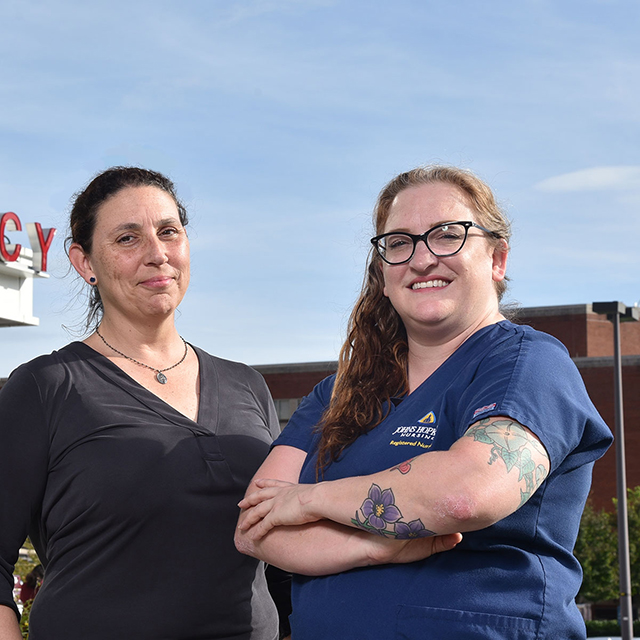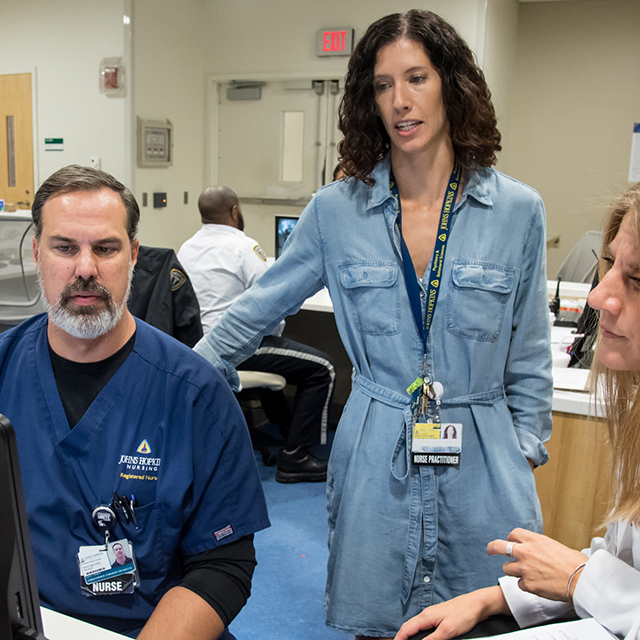The new psychiatric area in the Suburban Hospital emergency department boasts a cozy-looking lounge where patients can eat, socialize and watch television.
Every aspect is designed for maximum safety. The plastic rocking chairs look lightweight, but weigh about 50 pounds each, so patients can’t throw them. The inviting round table is even heavier. The television, tuned to a morning talk show, sits secure behind a locked cabinet, no wires within reach.
As more hospitals divide psychiatric emergency units from the rest of their emergency departments, they are fine-tuning the art and science of creating therapeutic and safe spaces for patients.
Medications and sharp objects are locked away. Grab bars, door handles, faucets and other fixtures are anti-ligature, meaning patients have no place to loop a bedsheet or cord for the purpose of self-harm. There are no drop tiles on the ceilings because patients could use them as weapons, or pop out the tiles and crawl into the ceiling grid.
The psychiatric emergency unit that opened at Suburban Hospital in April incorporates these features and more. The 2,229-square-foot space, previously an office suite, is known as the specialty care unit. It has six patient rooms, including one with its own bathroom for patients who require solitary care.
Patient rooms, which contain only a bed and a security camera in the corner of the ceiling, are painted in soothing beige and gray-green. Interior lights can be dimmed. The doors close, giving patients their privacy, but they also have small windows looking out into the rest of the unit, providing light and allowing the staff to see in.
Architect David Peabody, principal of CRGA Design in Annapolis, created sight lines and added security cameras so that each patient is always visible. You don’t want blind spots,” he explains. He also added two emergency exits, so staff members have secondary routes of egress if needed.
The specialty care unit replaces a smaller and less therapeutic space, created about 15 years ago as a pod within Suburban Hospital’s regular emergency room. “There were overhead lights all the time, there was a lot of stimulation, you could hear the noise and activity of the emergency department all around you,” says Greta Cuccia, clinical director for the emergency and pediatrics departments.
“The new space is much larger, much more private and more humane,” says Susan Webb, the hospital’s director of behavioral health emergency and outpatient services. “People don’t feel like they are locked in their rooms. They can get a meal together at a table. They are treated with kindness and care and compassion. All that makes them feel better.”



